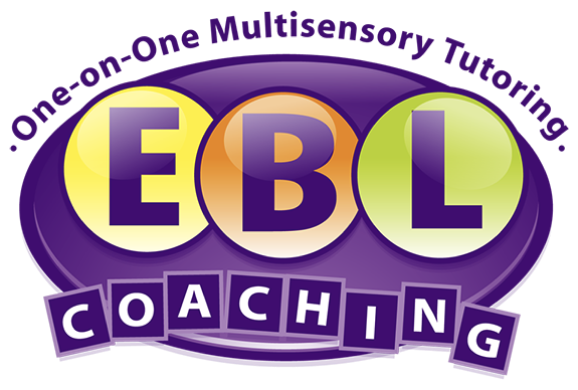
How to Boost Your Child’s Reading Readiness Skills

For some students, learning to read comes naturally. Through exposure to language and books, they figure out how to combine sounds to form words and recognize key sight words. Other students need a systematic approach for learning sound-letter relationships and blending. Whether your child ultimately learns to read naturally or with a structured approach, performing exercises with him to develop strong reading readiness skills can set the stage for reading success. Try the activities below, and remember to keep them playful, fun, and engaging.
Story Telling
Reading books and stories aloud to your child can help foster a joy for reading while building comprehension, vocabulary, listening, and fluency skills. As you read to your child, be sure to ask questions before, during, and after you read. Look at the cover together and ask him to make predictions about what he thinks the book will be about. While reading, ask questions about the plot, characters, and events that might happen next. You can also help your child connect the story to items or events in his life. For example, if there is a puppy in the book, ask if he thinks the puppy in the story looks or acts like his own. If a character in the story feels scared, ask if he’s ever felt that way and, if so, have him elaborate on those feelings. Encouraging him to articulate these connections between the plot and his own life will build comprehension, memory, and oral language skills.
Phonemic Awareness: Rhyming, Sounds, Words, and Syllables
Phonemic Awareness is the ability to hear, recognize, and manipulate sounds in words, and is a strong predictor of future reading success. Activities that involve rhyming, recognizing initial and final sounds, identifying words and syllables, and manipulating sounds all help build strong phonemic awareness skills. Try some of the exercises below to help strengthen these key reading readiness skills.
Rhyming
Help your child build stronger rhyming skills with a “Do These Words Rhyme?” game. To play, ask your child whether certain words rhyme, and track points for correct answers. For example, ask, “Does ‘man’ rhyme with ‘can’?” “Does ‘horse’ rhyme with ‘nose’?” “Does ‘feet’ rhyme with ‘foot’?” and so on. If he answers correctly, he receives a point. He can then ask you (or another player) similar rhyming questions. The first player to earn 10 points wins.
You can also create a game of Memory using words that rhyme. To do so, draw pictures of various objects on flashcards– a dog, sun, bone, log, phone, etc. (one per card). Place the cards upside down on a table. The first player flips over two cards. If the words rhyme, the player made a match. If not, that player turns the cards back down. Then the next player flips over two cards, and so on. The player who makes the most rhyming matches wins.
Initial and Final Sounds
Learning to recognize sounds in words is a key component of reading readiness. Engage your child in an initial and final sounds game to reinforce this skill. To play, ask your child to tell you the first sound he hears in a given word. For example, ask him to tell you the first sound he hears in pizza (/p/), rug (/r/), or chair (/ch/). If he answers correctly, he receives a point. Next, have him dictate his own words to you (or another player) and you tell him the initial sound. The first player to receive 10 points wins. You can play a similar game with final sounds. For example, ask him to tell you the final sound he hears in the word clap (/p/), door (/r/), push (/sh/), and so on.
Words and Syllables
Play a clapping game with your child to teach him to identify words in sentences and syllables in words– another important reading readiness skill. To do so, read various sentences to your child and ask him to repeat the sentence back to you while clapping one time for each word. For example, for the sentence “Clean your room” he would clap three times, once for each word. For “Eat your green apple” he would clap four times, for “Don’t forget to bring home your book” he would clap seven times, and so on. Similarly, to practice syllable identification, you can read various words to your child and have him clap one time for each syllable in the word. For example, he would clap two times for donut, four times for alligator, and three times for calendar. You can also play these games using counting chips as manipulatives instead of clapping. For each word in a sentence or for each syllable in a word, your child would place down one counting chip.
Songs
Singing songs to your child can help build vocabulary, listening, comprehension, rhyming, and sound discrimination skills, amongst other reading readiness skills. Sing songs to your child that include patterns and rhymes, such as Twinkle Twinkle Little Star, Itsy Bitsy Spider, and Yankee Doodle. Rather than just singing the melody, ask your child questions about the words and stimulate discussions about the lyrics. For example, you can ask your child what a “water spout” is in Itsy Bitsy Spider or what a “dell” is in Farmer in the Dell, and explain the definitions if he doesn’t know them. Integrating discussions and activities into singing songs can help further develop language and pre-reading skills.
Be sure to keep these exercises fun, playful, and engaging. In doing so, your child will enjoy the process and develop a true zest for learning. Practicing these games and activities will ultimately make him a strong, confident, and successful reader.
